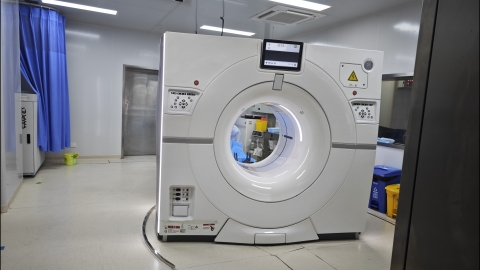What are the CT findings of cerebral infarction?
Cerebral infarction is a disease caused by impaired blood supply to the brain, leading to ischemia, hypoxia, and necrosis of brain tissue. CT imaging is a commonly used method for diagnosing cerebral infarction. CT findings vary at different stages of the disease and mainly include low-density lesions, lesion location characteristics, lesion morphology, mass effect, and early specific signs. A detailed analysis is as follows:

1. Low-density lesions: After 24 hours from onset, cerebral infarction areas typically appear on CT images as poorly demarcated low-density shadows with lower density than normal brain tissue, due to reduced tissue density caused by ischemic necrosis. As the condition progresses, the margins of the low-density areas become clearer and the density further decreases.
2. Lesion location characteristics: The location of the lesion corresponds to the vascular territory of cerebral blood supply. For example, infarctions in the middle cerebral artery territory often occur near the lateral sulcus of the cerebral hemisphere; posterior cerebral artery territory infarctions are commonly found in the occipital lobe; and basal ganglia infarctions are located in the deep cerebral basal ganglia region.
3. Lesion morphological features: Infarct lesions are often irregular in shape and may appear as patchy, wedge-shaped, or fan-shaped abnormalities. The apex of a wedge-shaped lesion usually points toward the deep cerebral vascular branches, consistent with the distribution pattern of blood supply. Some small infarcts present as round or oval low-density shadows less than 15 mm in diameter.
4. Mass effect: Large-area cerebral infarction may cause a mass effect,表现为 swelling of brain tissue in the affected area, disappearance of cerebral sulci and gyri, compression and deformation of ventricles, and contralateral displacement of midline structures. This typically occurs 3–7 days after onset and indicates significant cerebral edema, requiring close monitoring to prevent herniation.
5. Early specific signs: Within 6–24 hours of onset, some patients may show early CT signs such as hyperdense middle cerebral artery sign or insular ribbon sign. Although these signs are not definitive, they can help suggest cerebral infarction early and allow timely intervention.
In clinical practice, cerebral infarction should be evaluated comprehensively based on patient symptoms, time of onset, and CT findings. Once diagnosed, patients should receive standardized treatment according to medical guidance. Daily management should include controlling blood pressure, blood glucose, and lipid levels, quitting smoking and limiting alcohol consumption, maintaining regular作息, and reducing the risk of recurrent cerebral infarction.








